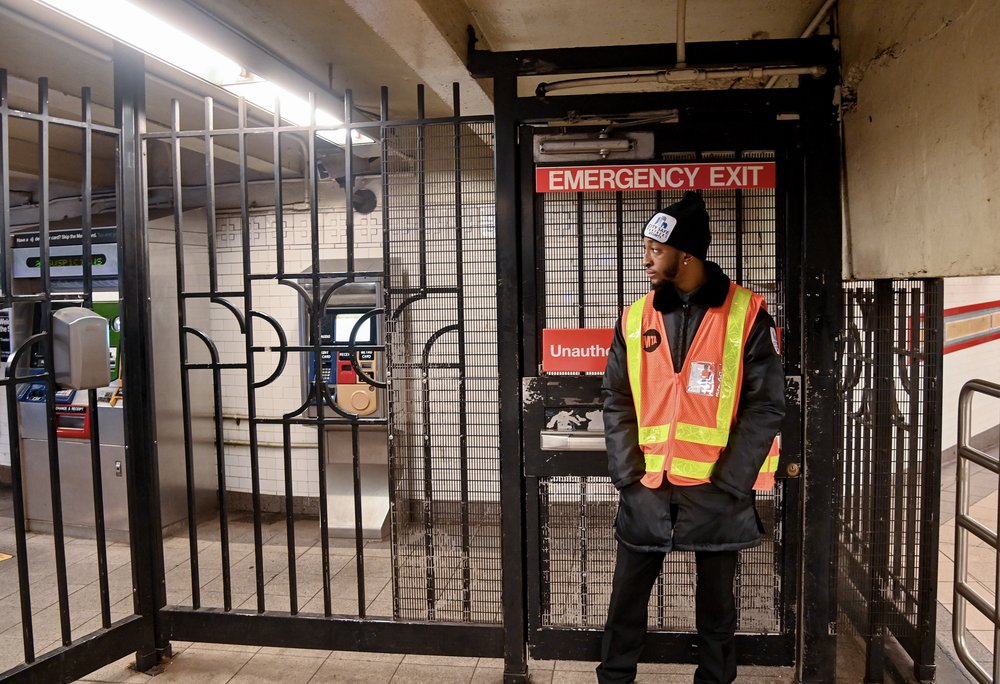MTA reports dip in fare evasion as NYPD arrests skyrocket in subway system
Jan. 29, 2025, 12:33 p.m.
The MTA estimates 44% of bus riders and 10% of subway riders skipped the fare during the final three months of 2024.

Fare evasion dropped slightly on New York City’s subways and buses last year following an enforcement blitz by the NYPD, MTA officials said on Wednesday.
MTA Chair Janno Lieber said 10% of subway riders skipped the turnstiles during the final three months of 2024, down from an estimated 13% during the third quarter of the year. Fare evasion on the agency’s buses fell from 48% to 44% over the same period, according to MTA estimates.
“It’s the first time we have turned around the trajectory of those stats and I am thrilled and I want everybody to recognize the MTA is fighting this fight all out,” Lieber said at a meeting of the transit agency's board.
The drop came amid a drastic increase in police activity on trains and buses. Arrests in the subway system increased by 67% in 2024 from the year prior, NYPD Assistant Transit Chief Jerry O’Sullivan said during an MTA meeting on Monday. Summonses issued in the system also grew by 19% last year, according to O’Sullivan.
“The NYPD will continue to be committed to addressing quality of life and crime reduction this year,” he said
O’Sullivan also said there were nearly 24,000 law enforcement “contacts” — arrests, investigations or stops by officers — related to fare evasion last year.
MTA officials on Wednesday said they plan to expand the agency’s enforcement blitz on buses, which launched last fall. The crackdown deploys unarmed MTA enforcement agents and NYPD officers to issue tickets to bus fare evaders.
Transit officials have complained about fare evasion for decades. Lieber in 2023 issued a report estimating fare evasion cost the agency more than $600 million a year. The problem reached a fever pitch last summer, when MTA officials reported nearly half of the city’s bus riders weren’t paying their fares.
NYC Transit Senior Vice President Frank Annicaro on Monday said his team was looking at more ways to reduce fare evasion on buses. He said the MTA was testing camera feeds on 100 buses. The system, which is similar to ones used in retail stores like Target, will display a live view of the entry area on monitors to let riders know they’re being watched.
New York Gov. Kathy Hochul earlier this month announced plans to put NYPD officers on every single subway train in service between 9 p.m. and 5 a.m. The MTA over the last year has also increased its deployment of third-party security guards who stand near subway emergency gates to discourage riders from sneaking through without paying.
Still, the fare evasion crackdown was a cause for concern among some transit advocates, who said taxpayer dollars would be better used to improve subway and bus service.
“Fare enforcement comes with a price tag, whether it's police overtime, private security or new fare gates,” Danny Pearlstein, a spokesperson for the group Riders Alliance, wrote in an email. “Rather than demand that fares cover the cost of transit, fare collection itself is a major public investment.”
MTA board member David Jones, who leads the nonprofit Community Service Society of New York, called the drop in fare evasion “a positive sign,” but questioned whether the increased enforcement was racially targeted.
“I'm still worried about the demographics of who's being stopped and who's being arrested,” he said. “ I'm worried that if we start delving into these statistics, you're going to find the same disparity of the inequality of them and the lack of equity.”
NYPD data shows white people accounted for just 5% of those arrested for fare evasion during the third quarter of 2024.
MTA reports slight decrease in fare evasion on buses after launching crackdown